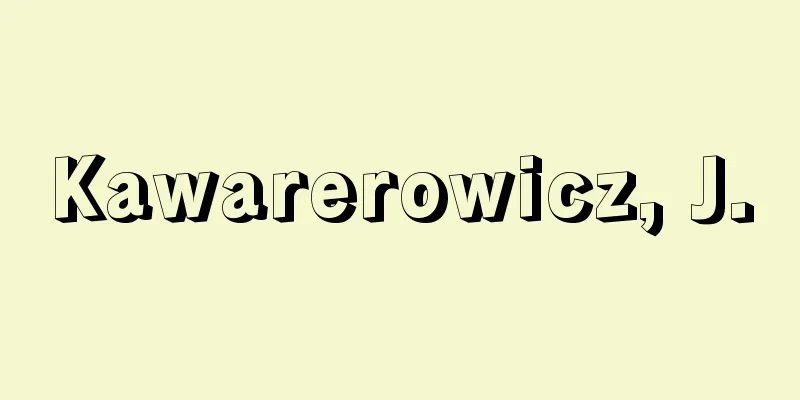Kurama Temple

|
Located in Kurama Honmachi, Sakyo Ward, Kyoto City, on the middle slope of Mount Kurama, this temple is the head temple of the Kurama Kokyo sect. It is also called Shobizan Kongo Jyumyoin. When it was first established, it was a Ritsu sect temple, and later a Shingon sect temple, but during the Hoan era (1120-1124), it came under the control of Shoren-in Monzeki and became a Tendai sect temple. At the end of the Edo period, it came under the control of Nikko Rinnoji Monzeki Monzeki for a time, but later returned to the control of Shoren-in Monzeki, and in 1949 (Showa 24), it left the Tendai sect and became an independent temple. According to the Kurama-gai-ji Engi, the temple was founded in 770 (Hōki 1) when Gantei Shonin, a disciple of the monk Ganjin, was led by a white horse in a spiritual dream to Mount Kurama, where he built a hermitage to enshrine a statue of Bishamonten. Furthermore, in 796 (Enryaku 15), Fujiwara Isen, the director of Toji Temple, was searching for a sacred place to enshrine Kannon Bodhisattva, when he was guided by Kibune Myojin to Mount Kurama, where he enshrined both Bishamonten and Kannon Bodhisattva. In the inner sanctuary, a statue of Demon King (Sanatoki Kumara, said to have been made by Kano Motonobu, a secret Buddha) is enshrined, and the temple regards it as a trinity of deities together with statues of Bishamonten and Kannon, and calls it Sonten. During the Kanpyo era (889-898), Minenobu of Toji Temple entered the mountain and became the head priest of the temple, improving the appearance of the temple. During the Heian period, Ryonin and Juei stayed in seclusion at the temple, and made it a training center for Yuzu-nembutsu. The spread of Pure Land Buddhism and the belief in Bishamonten's blessings for worldly gain overlapped, and Kurama Temple attracted the faith of nobles, samurai, and common people, but many of the warrior monks also acquired military power, and were involved in the civil wars of the Northern and Southern Courts and conflicts with the Kamo Shrine. During the Edo period, the temple also had strong ties with the shogunate, forming an organization of ten temples and nine temples, and faith in Kurama spread among the common people through organizations such as the "Kurama Gannin" and the "Kurama Ko." There are many legends surrounding Kurama Temple, including well-known legends such as Ushiwakamaru (Minamoto no Yoshitsune) and Kurama Tengu, and within the temple grounds there is a historic site related to Ushiwakamaru's training. There are also many annual events, such as the bamboo-cutting ceremony (June 20th) which is said to be associated with the story of how Minenobu defeated a giant snake that appeared during his training with the power of Buddhism, the Setsubun O-Onan ceremony (February Setsubun) according to ancient Imperial court customs, the Nyohoshakyoe (August 1st-3rd) which was revived in 1717 (Kyoho 2), and the Vesak Festival (the night of the full moon in May). The festival of Yuki Shrine within the temple grounds is also famous as the "Kurama Fire Festival." The temple buildings have been destroyed by fire many times, but the current main hall and pagoda were rebuilt in recent years. The temple treasures, including the wooden Bishamonten Triad and over 200 relics from the Kurama-dera sutra mound, are designated as national treasures, while the wooden standing statue of Shokannon, the wooden Tobatsu Bishamonten statue, Kurama-dera documents written in ink on paper, copper lanterns, and the gilded sanko-hilt sword are designated as important national cultural properties. In 1976 (Showa 51), Yosano Akiko's study, Tohakutei, was relocated here. [Nakayama Kiyota] "Ancient Temple Pilgrimage: Kyoto 27, Kurama Temple" (1978, Tankosha) ▽ "Kurama Temple by Nakano Genzo" (1972, Chuokoron-Bijutsu Shuppan) [Reference] | |Source: Shogakukan Encyclopedia Nipponica About Encyclopedia Nipponica Information | Legend |
|
京都市左京区鞍馬本町、鞍馬山中腹にある鞍馬弘教(こうきょう)の総本山。松尾山(しょうびざん)金剛寿命院(こんごうじゅみょういん)と号する。開山当時は律宗、その後は真言宗であったが保安(ほうあん)年間(1120~24)には青蓮院門跡(しょうれんいんもんぜき)の支配下となって天台宗に属した。幕末には一時、日光輪王寺(りんのうじ)門跡の支配下となったが、のち青蓮院門跡下に復し、1949年(昭和24)天台宗を離脱して単立寺院となった。『鞍馬蓋寺(がいじ)縁起』によると、鑑真(がんじん)和上の弟子鑑禎上人(がんていしょうにん)が770年(宝亀1)に霊夢で白馬に導かれて鞍馬山に至り、毘沙門天(びしゃもんてん)像を祀(まつ)る草庵(そうあん)を結んだのが草創という。さらに、796年(延暦15)造東寺長官の藤原伊勢人(いせんど)が観世音菩薩(かんぜおんぼさつ)を祀る霊地を求めていたところ、貴船明神(きぶねみょうじん)の導きで鞍馬山に至り、毘沙門天と観世音菩薩をあわせ祀ったと伝える。奥の院には魔王尊像(サナトキクマラ、伝狩野元信(かのうもとのぶ)作、秘仏)が祀られており、同寺では毘沙門天像、観音像とともに三身一体の本尊とし、尊天(そんてん)と称している。寛平(かんぴょう)年間(889~898)には東寺の峯延(ぶえん)が入山して根本別当となり、寺院の形容を整えた。平安時代には良忍(りょうにん)や重怡(じゅうい)が参籠(さんろう)して同寺を融通念仏(ゆうずうねんぶつ)の道場となした。浄土教信仰の普及と毘沙門天の現世利益(りやく)の福徳を願う信仰が重なり、鞍馬寺は公家(くげ)、武家、庶民の信仰を集める一方、多くの僧兵が武力を備え、南北朝の内乱や賀茂社との間に争いを起こしている。江戸時代には幕府との関係も深く、十院九坊の寺院組織を形成し、また、「鞍馬の願人(がんにん)」「鞍馬講」などにより庶民の信仰が広まった。 鞍馬寺に関する伝説は多く、牛若丸(うしわかまる)(源義経(よしつね))、鞍馬天狗(てんぐ)などはよく知られており、山内には牛若丸の修行にまつわる史跡がある。また、峯延が修行中に現れた大蛇を仏法の力で退治したという故事にちなむ竹伐(たけき)り会式(えしき)(6月20日)や、宮中の古式による節分追儺(ついな)式(2月節分)、1717年(享保2)に再興された如法写経会(にょほうしゃきょうえ)(8月1~3日)、ウエサク祭(5月満月の夜)など年中行事も多い。なお境内にある由岐(ゆき)神社祭礼は「鞍馬の火祭」として名高い。 たびたびの火災により堂舎を焼失、現在の本殿、多宝塔などは近年再建されたものである。寺宝の木造毘沙門天三尊像、鞍馬寺経塚遺物200余点が国宝に、木造聖観音立像、木造兜跋(とばつ)毘沙門天像、紙本墨書鞍馬寺文書、銅灯籠、鍍金三鈷(ときんさんこ)柄剣などが国重要文化財に指定されている。なお1976年(昭和51)に与謝野晶子(よさのあきこ)の書斎「冬柏亭(とうはくてい)」が移築された。 [中山清田] 『『古寺巡礼 京都27 鞍馬寺』(1978・淡交社)』▽『中野玄三著『鞍馬寺』(1972・中央公論美術出版)』 [参照項目] | |出典 小学館 日本大百科全書(ニッポニカ)日本大百科全書(ニッポニカ)について 情報 | 凡例 |
Recommend
Carex onoei (English spelling)
…[Tetsuo Koyama]. … *Some of the terminology that...
John Dryden
English poet, playwright, and critic. Born August...
Employment policy
A policy to prevent unemployment and ease employme...
The Great Leper
A fossil human from the Middle Pleistocene discove...
"Loved Brother Communication" - Aitaitsuushin
...After working as a teacher at Tsurutani Gakuin...
Kamekichi Kashimura
...However, after the Meiji Restoration, when lan...
Saṃghabhadra (English spelling) Samghabhadra
...A scholar of the Sarvastivada school of Indian...
Denis Diderot
A French Enlightenment thinker. Born on October 5...
Free-cutting steel
Steel with elements added that effectively improv...
Oncosfera - Oncosfera
Please see the "Hexagonal Larvae" page....
Kiiretsuchi Torimochi - Kiiretsuchi Torimochi
A perennial plant of the family Pittosporum (APG ...
Asahikawa [city] - Asahikawa
A city in central Hokkaido. Established as a city ...
Radiation temperature
The temperature of a radiating body such as a star...
Land surveying pole - Kenchizao
A surveying tool used during land surveys. Also ca...
Stabilizer - Antiban
A general term for the horizontal and vertical sta...









